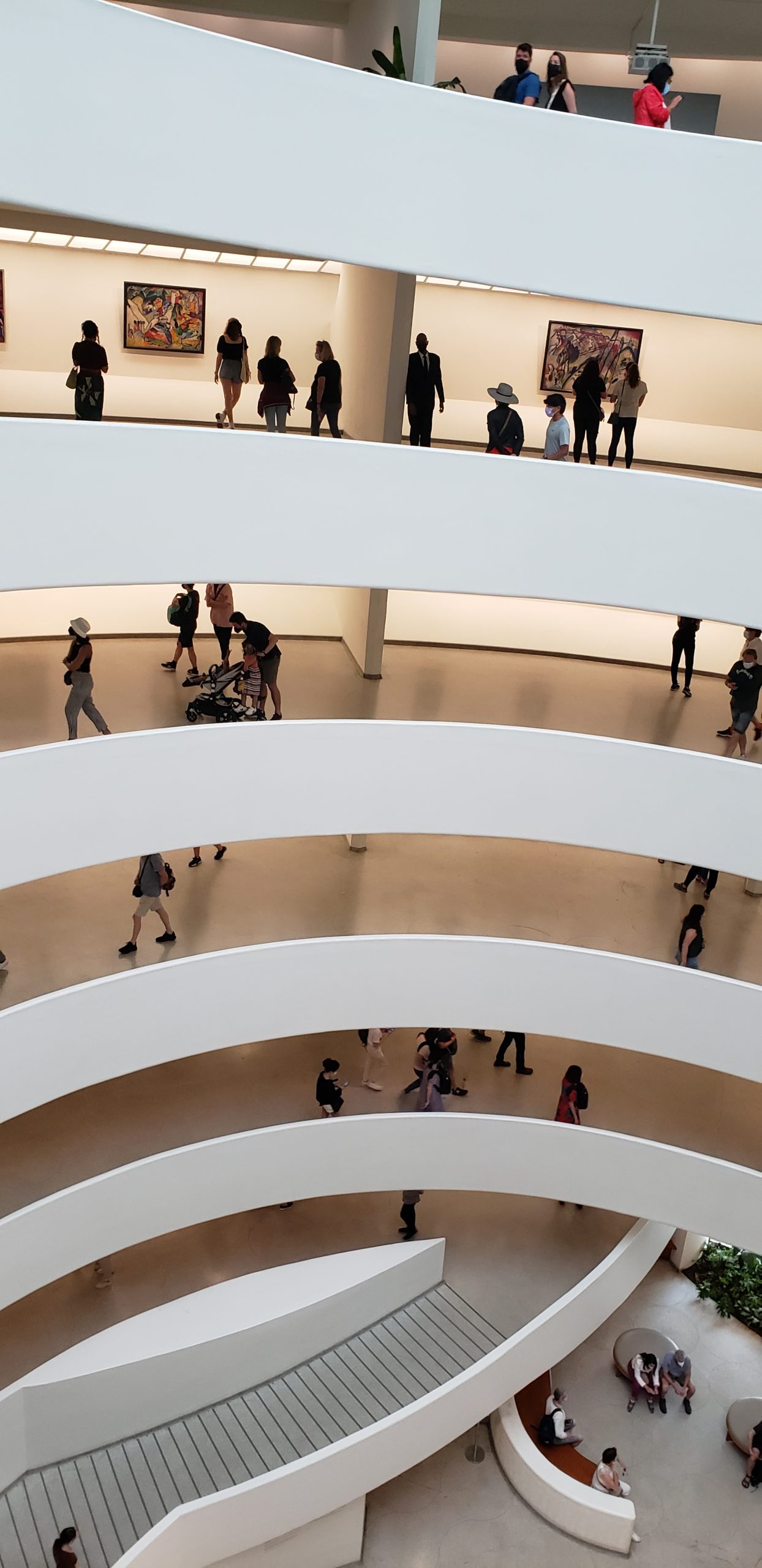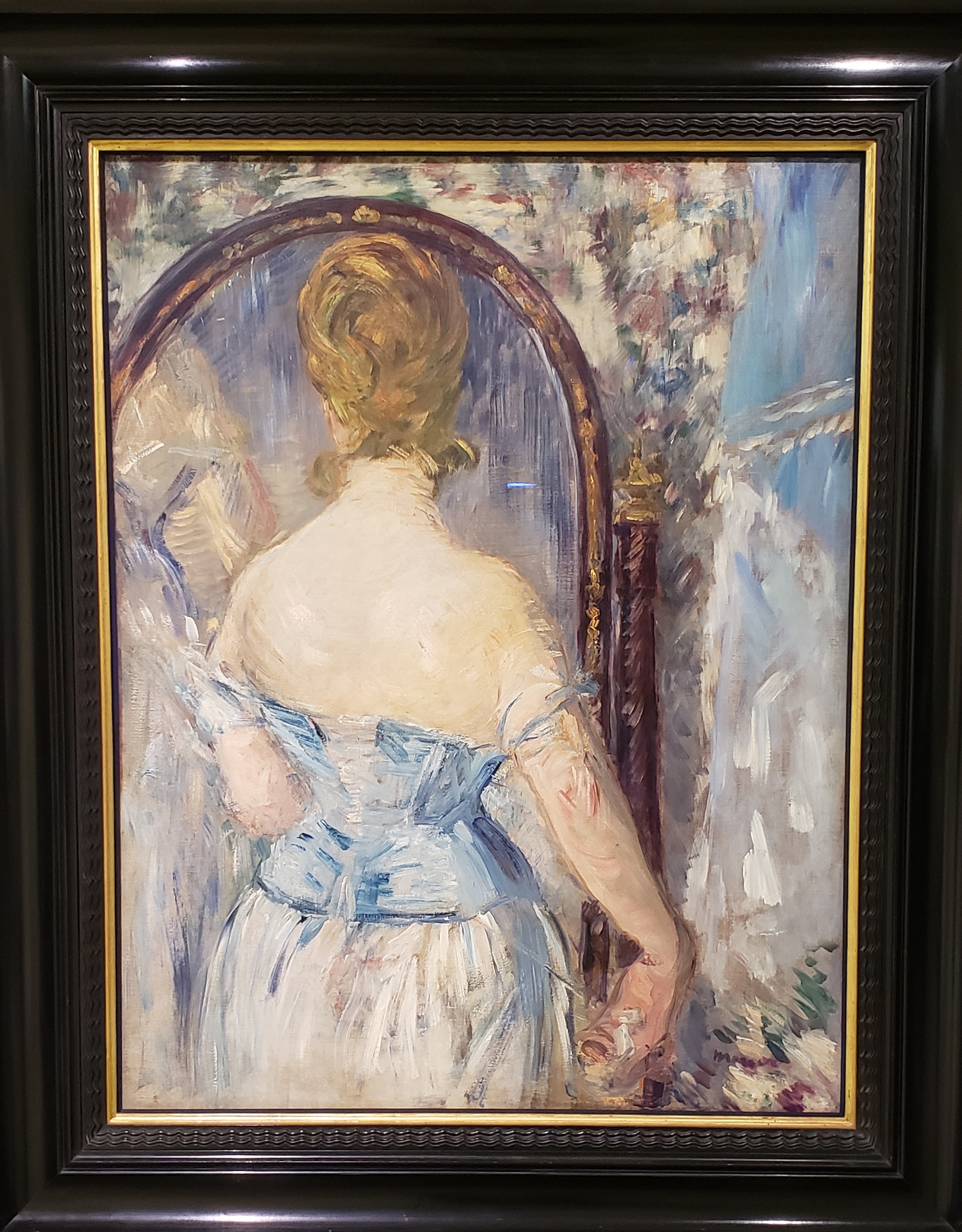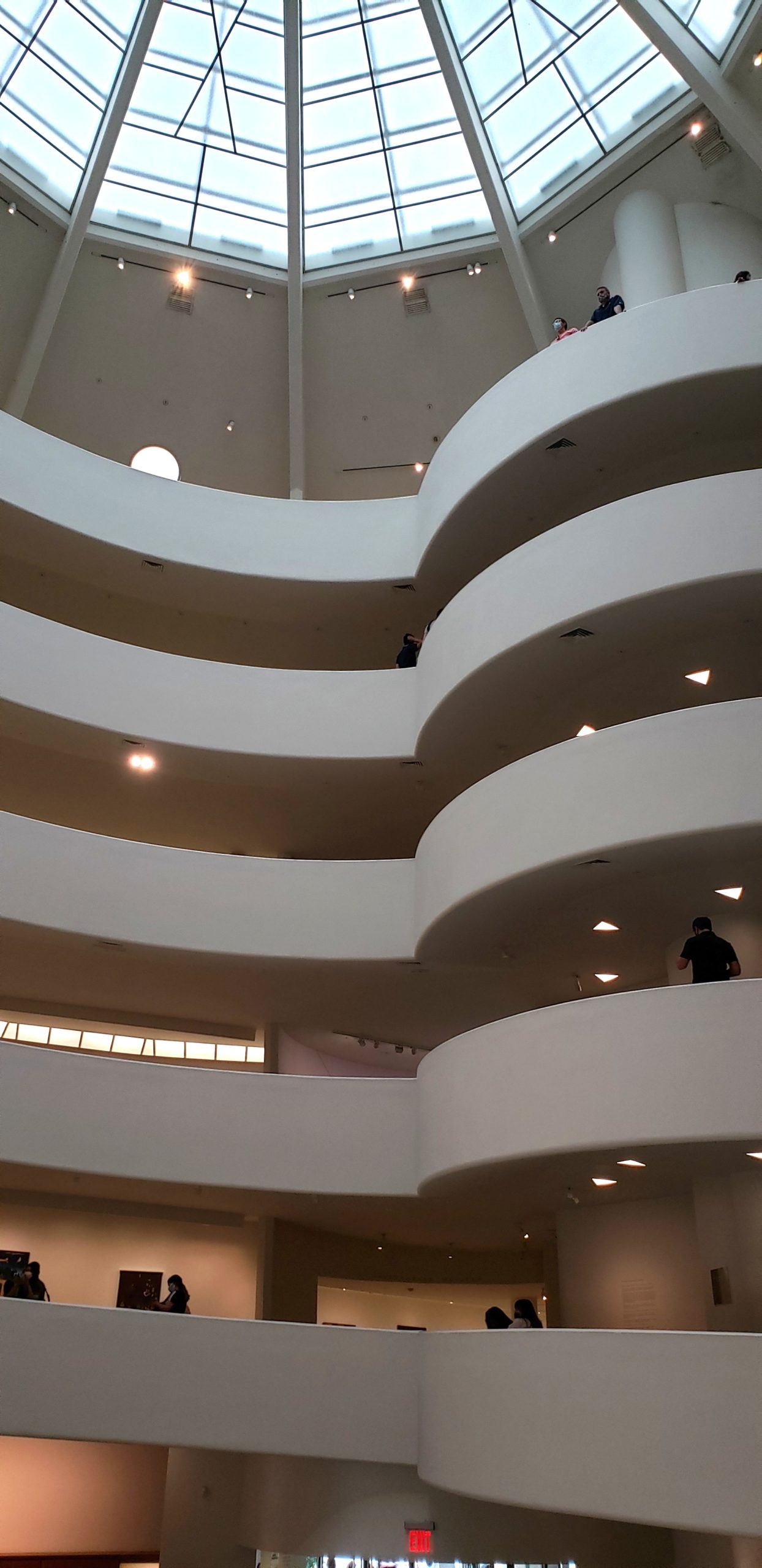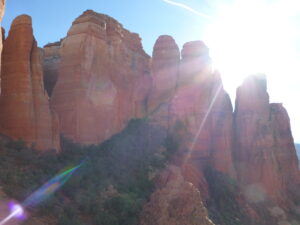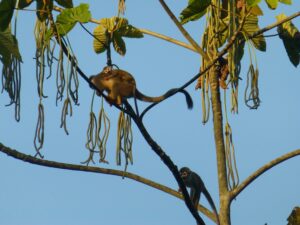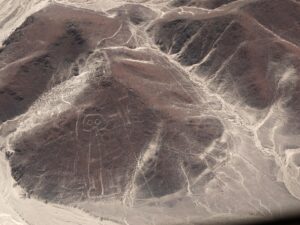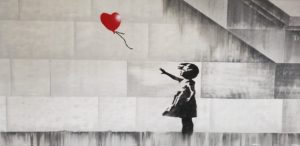In brief: Not everyone “gets” the abstract art Kandinsky pioneered. Yet attention to the span of his paintings proved engaging, especially while circling Wright’s solid spiral.
We took time out from family get-togethers in NYC to visit with our long-time friends and zoom-demic buddies, Lynne and George. We ended with hours of a delicious meal and conversation near Lincoln Center. We began with the wonder of the Guggenheim Museum and its featured exhibit on Vassily Kandinsky. Not everyone “gets” the abstract art he pioneered (and we were not always moved by his work). Yet, attention to the span of his paintings proved engaging, especially while circling the Frank Lloyd Wright design which made solid his own abstraction of spiral and pyramid.
Dizzying and calming, the museum is always dramatic in the sweep of its spiral, but also lets you share in the experience of others across the levels, viewing the works one has seen and the ones yet to be seen.
We were supposed to start at the bottom, the last works by Kandinsky, and spiral to the top, the earliest works. We all agreed we were top to bottom folks, though, and were glad we were. The images and ideas that were more evident in the early work helped vivify the artist’s language in the later paintings. And that’s the order of the photos we selected.
Here in “The Blue Mountain,” for example, the Fauvist outburst of color demonstrates his roots in Russian folk art alongside key motifs: the artist who transforms art (the horse and rider), the aspiration to a spiritual renewal represented by the blue mountain, and natural forms morphing into abstract shapes.
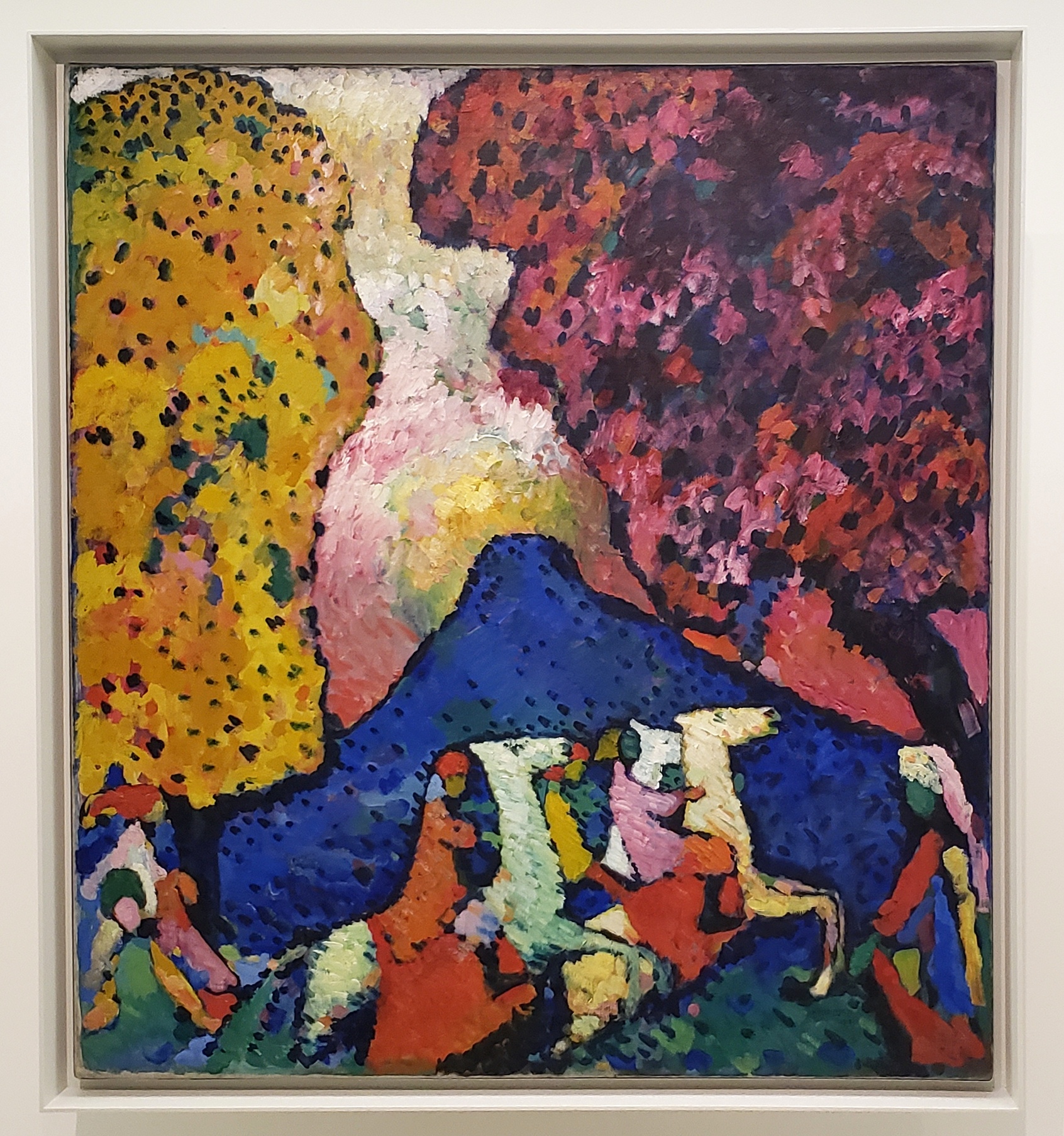
The same motifs are less distinctly recognizable in this preliminary version of “Composition II,” but there nonetheless. What was quite surprising to us was the vibrant sense of motion in Kandinsky’s works, often restless, often sweeping across the canvas, as here. The speedy rider heads from a world of matter and cataclysm to a world of spiritual renewal and redemption. White spaces start representing a kind of spiritual calm.
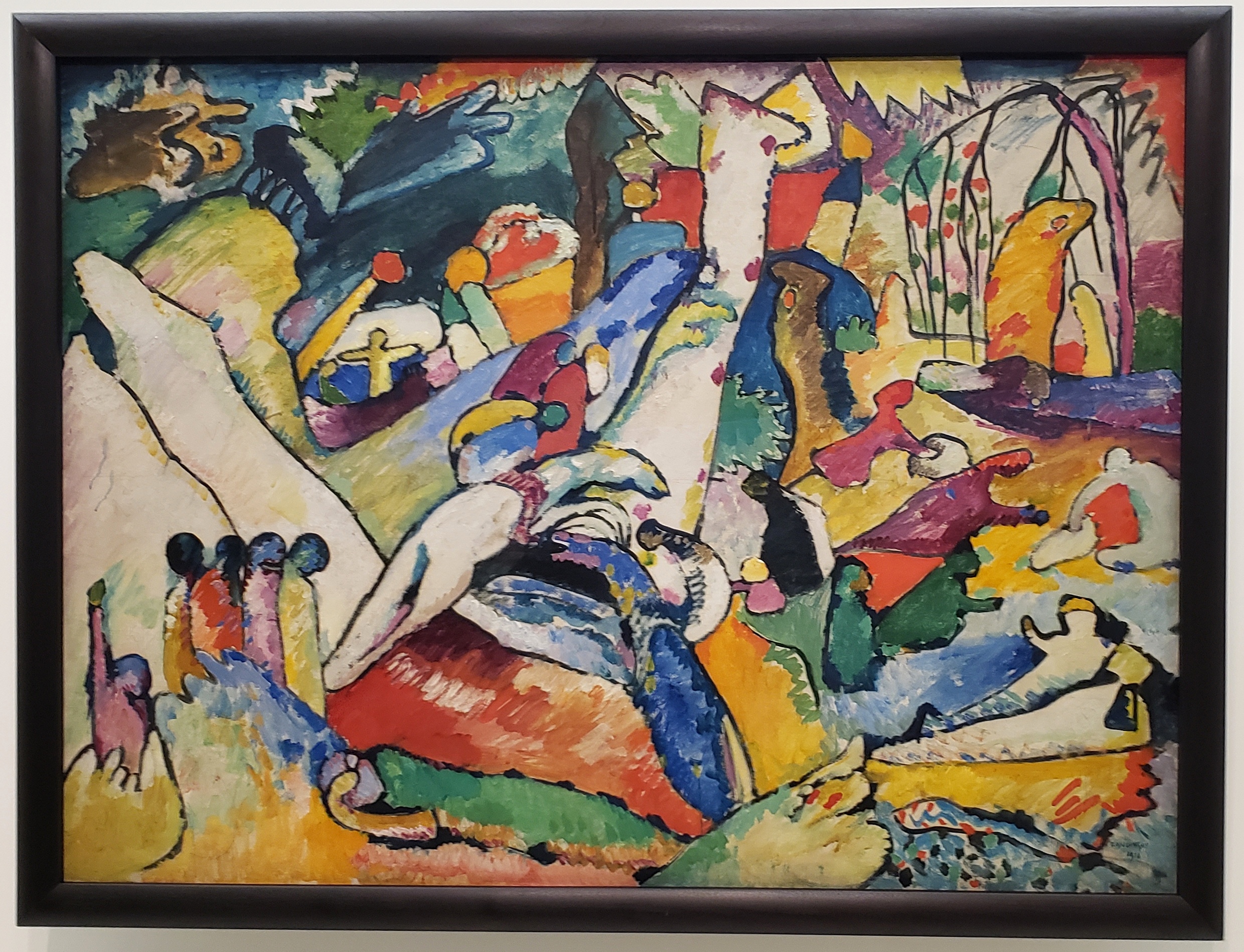
“Painting with White Border”: We’re in a whirlwind of color, the visual correlative of emotion, as Kandinsky just barely keeps touch with representational art. The arched form of the blue rider – both the artist and St George, patron saint of Moscow – thrusts his white lance at the reddish clown-like figure of a dragon to the bottom left. The spiritual masters the material. Elsewhere, geometric shapes and grids of lines become familiar touchstones of Kandinsky’s art.
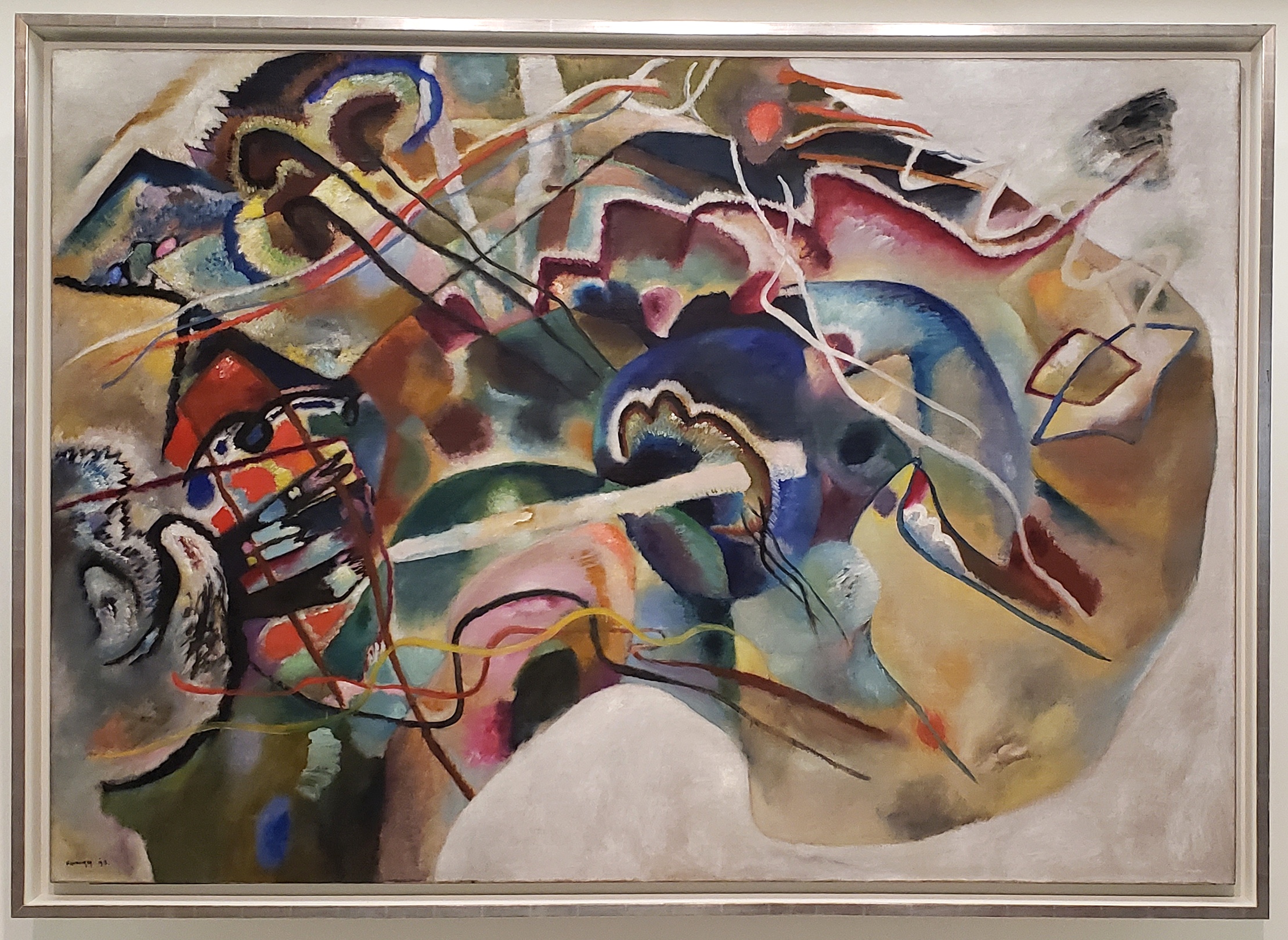
Lively and playful, with sweeping motion up to the left and down from the right, “Circles on Black” aims for emotional pull through color. Geometric forms like the circle and the grids speak to an orderliness against that upsweep of solid black with its sources, perhaps, in a life force suggested by the amoeba-like forms below and to the right.
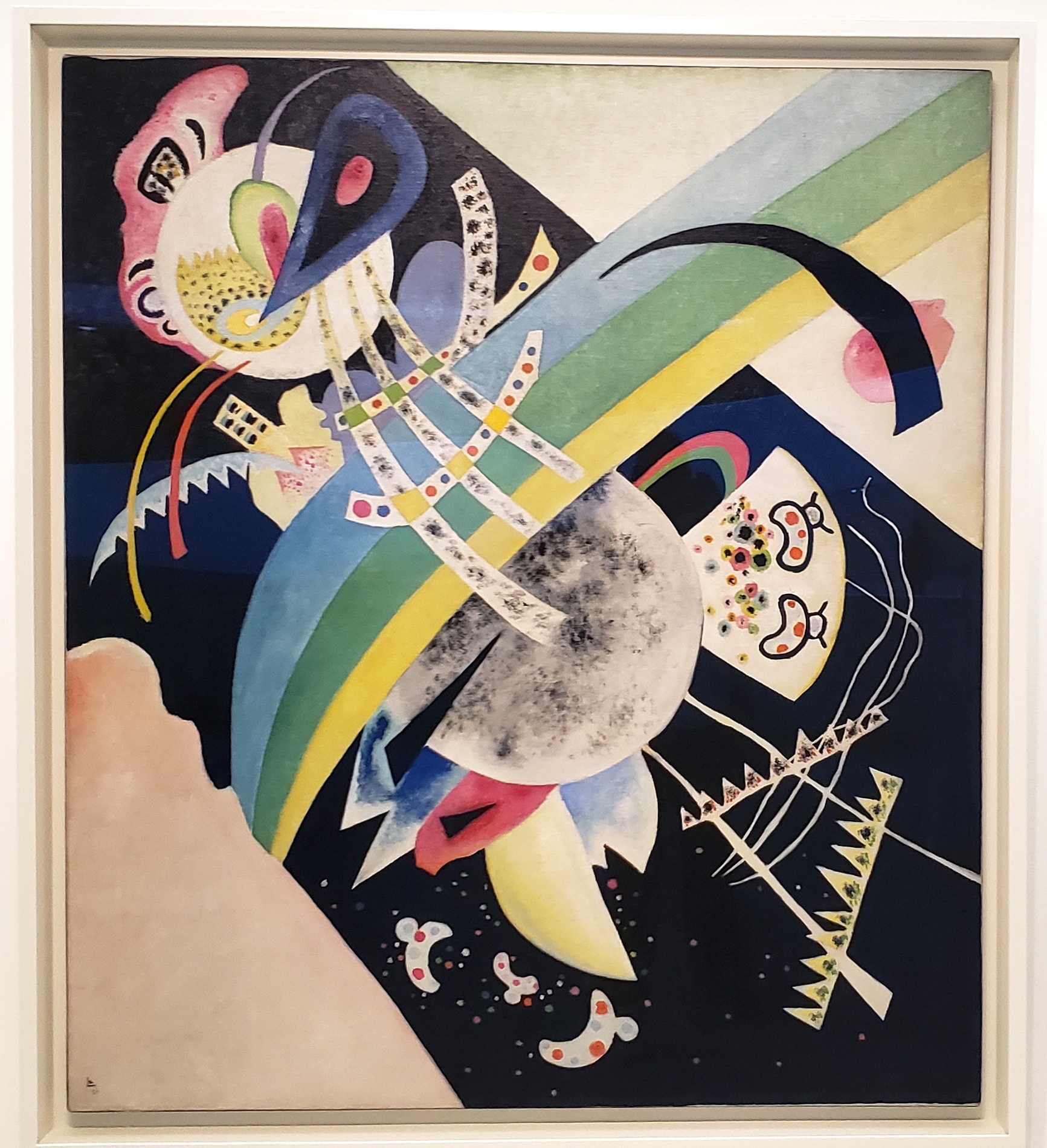
“Composition 8” is one of his most representative works, presenting a medley of color that contrasts the intensity of the corners and the muted background, as well as a kind of cubist abstraction with multiple planes intersecting on the flat surface – almost like a clockwork mechanism. His orderly and disorderly grids, full and emerging circles, add to the tension.
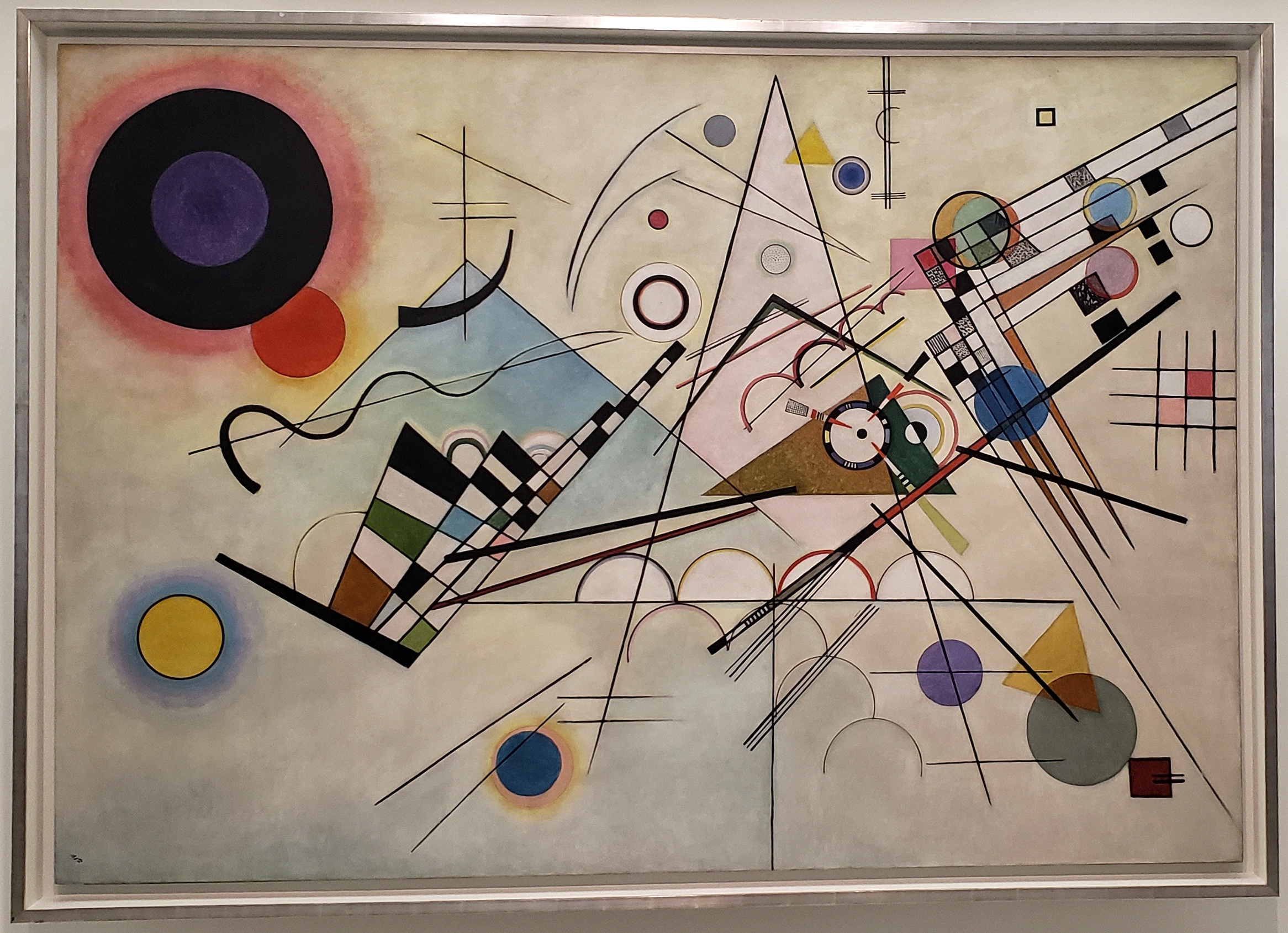
A kind of giddiness arises from one of Kandinsky’s last paintings, despite the muted background. “Around the Circle” arranges a variety of figures with magical qualities about an all-seeing red eye, including the human-like clown figure in the bottom right and the soaring one in the upper left. At the bottom, there’s even a Twilight Zone kind of door opening at a staircase into the unknown, or other dimensions.
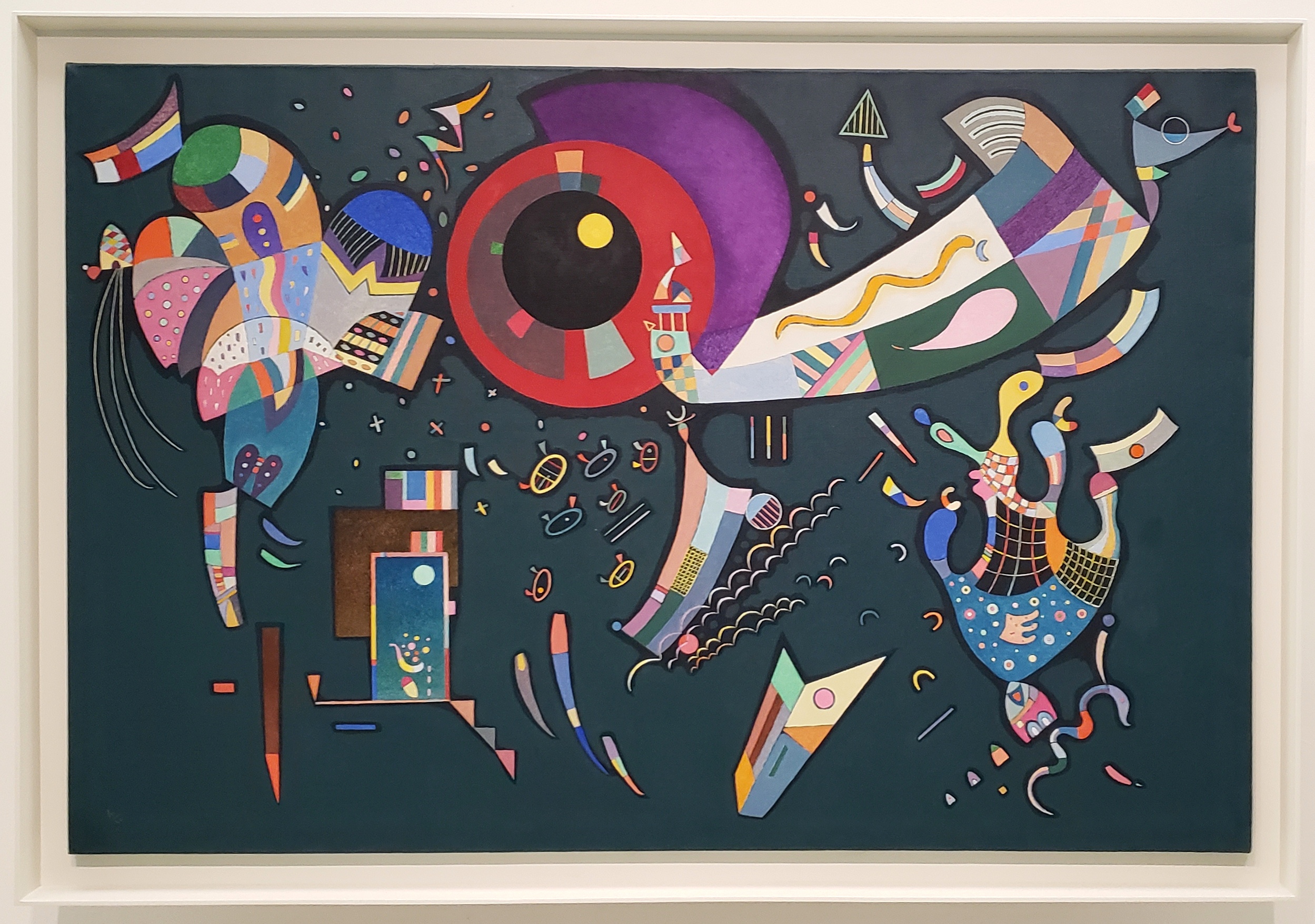
Two other fascinating exhibitions filled some of the museum’s lower space. A side exhibit includes masters of the late 19th and early 20th century, such as Manet, Monet, van Gogh, and Picasso. This Manet (Before the Mirror) seems quite far from the abstractions of Kandinsky, yet only about 50 years separate it from the latter’s work.
Though representational in a way and lovely in its colors, this piece shows Manet also reaching for different forms of expression, with its intense brushwork and mystery (the blurred shape to the right, the distortions of the mirror, and the intrusion of the painter/viewer).
In the bottom spirals, Chilean artist Cecilia Vicuña showed her wide stylistic range, with cartoon-like images and scenes, as well as challenging figurative works that also explored spirituality in a troubled world.
And a last look at the Wright spiral and pyramid at the Guggenheim…
(To enlarge any picture above, click on it. Also, for more pictures from the USA, CLICK HERE to view the slideshow at the end of the itinerary page.)


